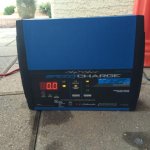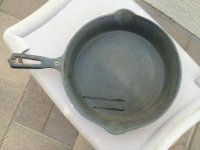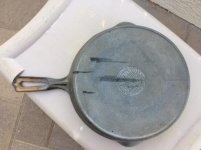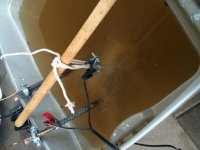While on vacation in the PHX area I offered to clean up some of my in-laws cast iron. Off to the local big box store, get basics, and then off to get a battery charger.
Got the tank set up, plugged in the charger and... nada. No bubbles, nothing.
Now, I'm used to using an old Sears chargers on wheels that hums like an SOB, but I know that charger is producing current. This newfangled charger makes no noise whatsoever.
Did I buy the wrong type of charger?
Got the tank set up, plugged in the charger and... nada. No bubbles, nothing.
Now, I'm used to using an old Sears chargers on wheels that hums like an SOB, but I know that charger is producing current. This newfangled charger makes no noise whatsoever.
Did I buy the wrong type of charger?




